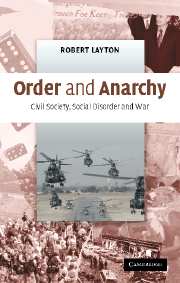4 - Warfare, biology and culture
Published online by Cambridge University Press: 23 November 2009
Summary
As chapter 3 has shown, there have been many violent conflicts in Europe, Africa and Asia during the 1990s. Society seems increasingly vulnerable to apparently mindless acts of destruction. Some authors have concluded that humans are genetically disposed to violence and that culture provides an inadequate safeguard. Robert Kaplan argues that where there is mass poverty, people find liberation in violence. ‘Only when people attain a certain economic, educational and cultural standard is this trait tranquilized’ (Kaplan 1994: 73). Richard Wrangham and Dale Peterson argue there is evidence to suggest ‘that chimpanzee-like violence preceded and paved the way for human war, making modern humans the dazed survivors of a continuous, 5-million-year habit of lethal aggression’ (1996: 63). Chapter 4 therefore looks at evidence for the evolutionary significance of human warfare. It argues that warfare and peacemaking are equally important in human social evolution.
WAR IN SMALL-SCALE SOCIETIES
Paul Sillitoe defines war as ‘a relationship of mutual hostility between two groups where both try by armed force to secure some gain at the other's expense’ (Sillitoe 1978: 252; cf. Ember and Ember 1997: 3). The frequency of warfare among human populations has led some to argue that warfare is the product of an inherent human disposition, a genetically determined drive to aggression. During the 1960s, writers such as Robert Ardrey (1967) and Konrad Lorenz (1966 [1963]) popularised the idea that warfare was linked to ‘instinctive’ defence of territories, and therefore part of human nature.
- Type
- Chapter
- Information
- Order and AnarchyCivil Society, Social Disorder and War, pp. 138 - 173Publisher: Cambridge University PressPrint publication year: 2006



